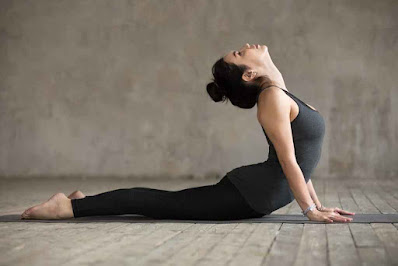Traditional Healthcare: A medium of healthy lifestyle
India has a rich and diverse tradition of healthcare that encompasses various systems, each with its unique principles and practices. Here are some traditional healthcare ways in India:
1. Ayurveda:
Principles: Ayurveda, one of the world's oldest holistic healing systems, is based on the balance of three doshas (Vata, Pitta, Kapha) and the importance of maintaining balance in bodily functions.
Each dosha represents a combination of the five elements (earth, water, fire, air, and ether).
Vata: Governed by the elements of air and ether, Vata is associated with qualities like dryness, lightness, and movement. It plays a role in bodily functions such as circulation, breathing, and elimination.
Pitta: Governed by the elements of fire and water, Pitta is associated with qualities like heat, intensity, and transformation. It is responsible for digestion, metabolism, and hormonal balance.
Kapha: Governed by the elements of earth and water, Kapha is associated with qualities like heaviness, stability, and moisture. It is involved in maintaining structure, lubrication, and immune function.
Treatments: Herbal remedies, dietary guidelines, detoxification (Panchakarma), and lifestyle recommendations.
2. Yoga:
Principles: Yoga is a holistic system that combines physical postures (asanas), breath control (pranayama), meditation, and ethical principles for overall well-being.
Benefits: Stress reduction, improved flexibility, enhanced mental focus, and spiritual development.
Some major yoga asans:
1.Bhujangasana (Cobra Pose):Lie on your stomach, place your hands under your shoulders, and lift your chest while keeping your pelvis on the floor.
Benefits of Bhujangasana:Improving Flexibility, Relieving Back Pain, Opening the Chest and Lungs, Reducing Stress and Fatigue, Enhancing Circulation,etc.
2.Sukhasana (Easy Pose):A comfortable cross-legged sitting position used for meditation and breath awareness.
Benefits of Sukhasana:Hip Flexibility, Stress Reduction, Enhanced Concentration, Regulation of Energy Flow,etc.
3. Unani Medicine:
Principles: Unani medicine, influenced by ancient Greek medicine, emphasizes balancing the body's four humors (blood, phlegm, yellow bile, black bile).
Treatments: Herbal formulations, dietary advice, and cupping therapy.
Example: Majun Falasfa
Ingredients:
•Aqua Distillate (Arq): A distilled water or infusion of herbs.
•Post-e-Jale (Shora-e-Zarishk): Barberry juice.
•Aab-e-Gulab (Rose Water): Rose water.
•Gul-e-Surkh (Red Rose Petals): Dried red rose petals.
•Gul-e-Gao Zaban (Hibiscus Flower): Dried hibiscus flowers.
•Gul-e-Neelofar (Blue Water Lily): Dried blue water lily flowers.
•Gul-e-Gao (Rose Petals): Dried rose petals.
•Gul-e-Khatmi (Marshmallow Flower): Dried marshmallow flowers.
•Gul-e-Kasni (Chicory Flower): Dried chicory flowers.
•Warq Nuqra: Silver foil.
Preparation:The above ingredients are mixed in specified proportions to prepare a semi-solid, sweet confection known as "Majun Falasfa."
Usage:Traditionally, Majun Falasfa is used in Unani medicine for various purposes, including promoting vitality, improving digestion, and enhancing overall well-being.
It is often recommended to be taken with milk or water.
4. Siddha Medicine:
Principles: Siddha medicine, originating in Tamil Nadu, focuses on maintaining the balance of the three doshas and emphasizes the role of the five elements.
Treatments: Herbal medicines, meditation, and therapeutic practices.
5. Homeopathy:
Principles: Homeopathy is based on the principle of "like cures like," where substances that cause symptoms in healthy individuals are used to treat similar symptoms in sick individuals.
Treatments: Highly diluted remedies made from natural substances.
6. Ayurvedic Diet:
Principles: Ayurveda emphasizes dietary choices based on an individual's dosha constitution and the seasons.
Treatments: Personalized diets, including specific foods and spices.
Hydration: Warm water or herbal teas are preferred over cold drinks.
Spices: Use warming spices for Vata, cooling spices for Pitta, and stimulating spices for Kapha.
Fresh and Seasonal: Emphasize fresh, seasonal, and locally sourced foods.
Mindful Eating: Eat in a calm and relaxed environment, paying attention to your body's hunger and fullness cues.
7. Mudra Therapy:
Principles: Mudras are hand gestures used in conjunction with breathing techniques to influence the body's energy flow.
Treatments: Different mudras are believed to have specific health benefits.
Example: Gyan Mudra (Mudra of Knowledge)
Posture: Sit comfortably with your back straight, either on a chair or cross-legged on the floor.
Hand Position:Touch the tip of the thumb to the tip of the index finger, forming a circle.
Keep the other three fingers straight but relaxed.
Gesture: Place your hands on your knees, with palms facing upward.
Benefits of Gyan Mudra:Enhancement of Meditation Practices, Boosting Memory, Release of Tension, Alleviation of Insomnia,etc.
8. Ayurvedic Massage and Oil Therapies:
Principles: Abhyanga, or oil massage, is a common practice in Ayurveda for promoting relaxation, improving circulation, and balancing the doshas.
Treatments: Specific oils and massage techniques based on individual needs.
It's important to note that while these traditional healthcare practices have been integral to Indian culture, the integration of traditional and modern healthcare is becoming increasingly common. Many traditional practices are gaining recognition in mainstream healthcare, and efforts are being made to preserve and promote traditional wisdom while ensuring the safety and efficacy of healthcare interventions. Always consult with healthcare professionals for personalized advice and treatment.

.jpg)



Comments
Post a Comment